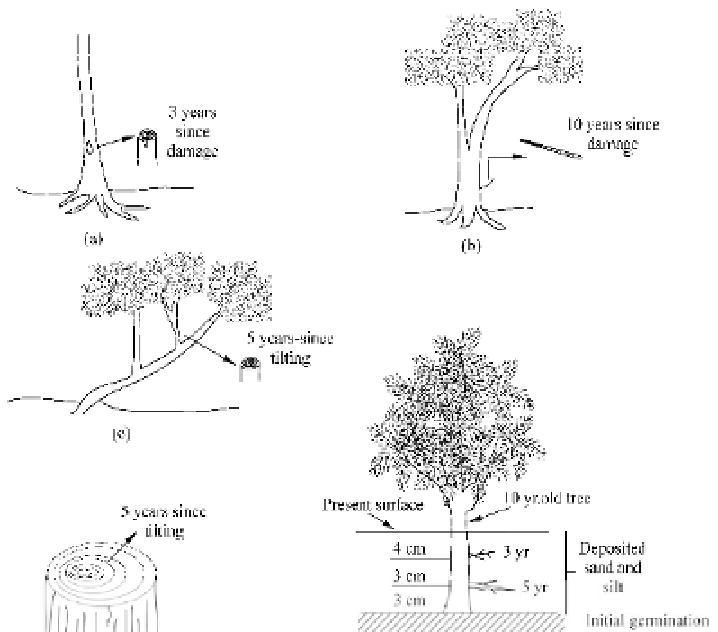Environmental Engineering Reference
In-Depth Information
light or closed canopy situations. A final suite of hardwood vegetation (Suite 3, Table 2.4), typical of
undisturbed systems, may establish on the new floodplain after complete recovery to a meandering channel
and the development of natural levees. Although the exact species involved in recovery (Table 2.4) will
vary from region to region, it is reasonable to assume that the characteristics of the suites along many
recovering incised channels will be similar.
2.4.3
Dendrogeomrophic Evidence of Evolution of Incised Rivers
Dendrogeomorphology is the study of geomorphic processes through the use of dendrochronologic (tree
ring) analysis (Shroder, 1980; Shroder and Butler, 1987). Tree ring analysis may be used to estimate the
rate of channel widening, bank and floodplain accretion, and the timing of vegetation establishment
(stability) on various fluvial surfaces (Hupp, 1987). The mechanism of radial growth is well documented
in the botanical literature. The annual increment of tree growth has been the basis of many studies using
tree rings in documentation of the magnitude and frequency of important hydrologic and geomorphic
events. Trees and saplings growing on bank surfaces may also be tilted or scarred during mass wasting or
may be partly buried during bank or floodplain accretion. Thus, increment cores or cross sections collected
from riparian trees can be aged and crossdated to determine the timing of geomorphic events. When stem
age data are combined with measurements of failure-block width or burial depth, the rates of channel
widening and bank accretion, respectively, may be estimated. Figure 2.55 shows the types of botanical
evidence of geomorphic events including floods and mass wasting (Hupp,1988).
Fig. 2.55
Types of botanical evidence of geomorphic events: (a) Corrasion scar; (b) split base sprouts; (c) Sprouts
from tilted parent; (d) Eccentric growth; and (e) Generalized buried sapling, showing age and depth of sediment
deposition (after Hupp, 1988)



Search WWH ::

Custom Search